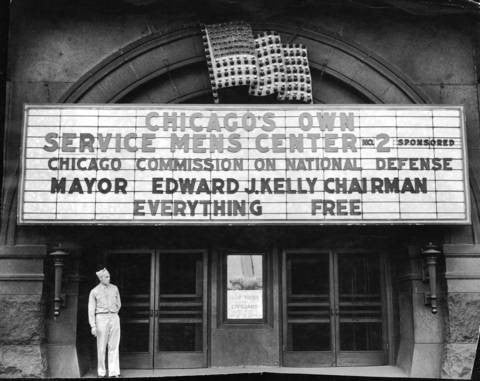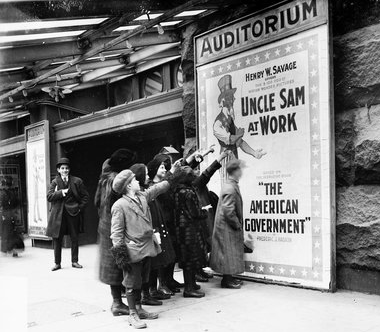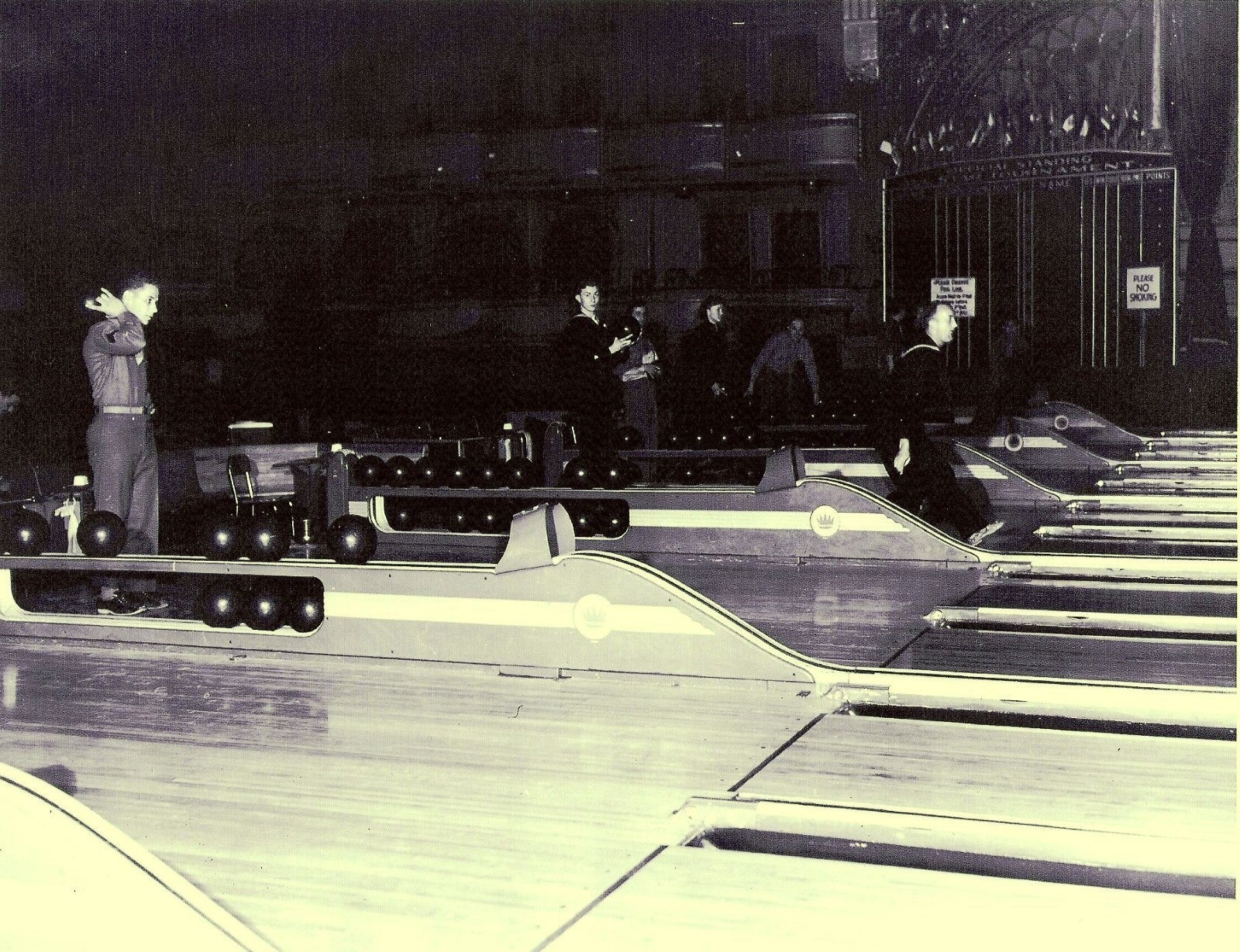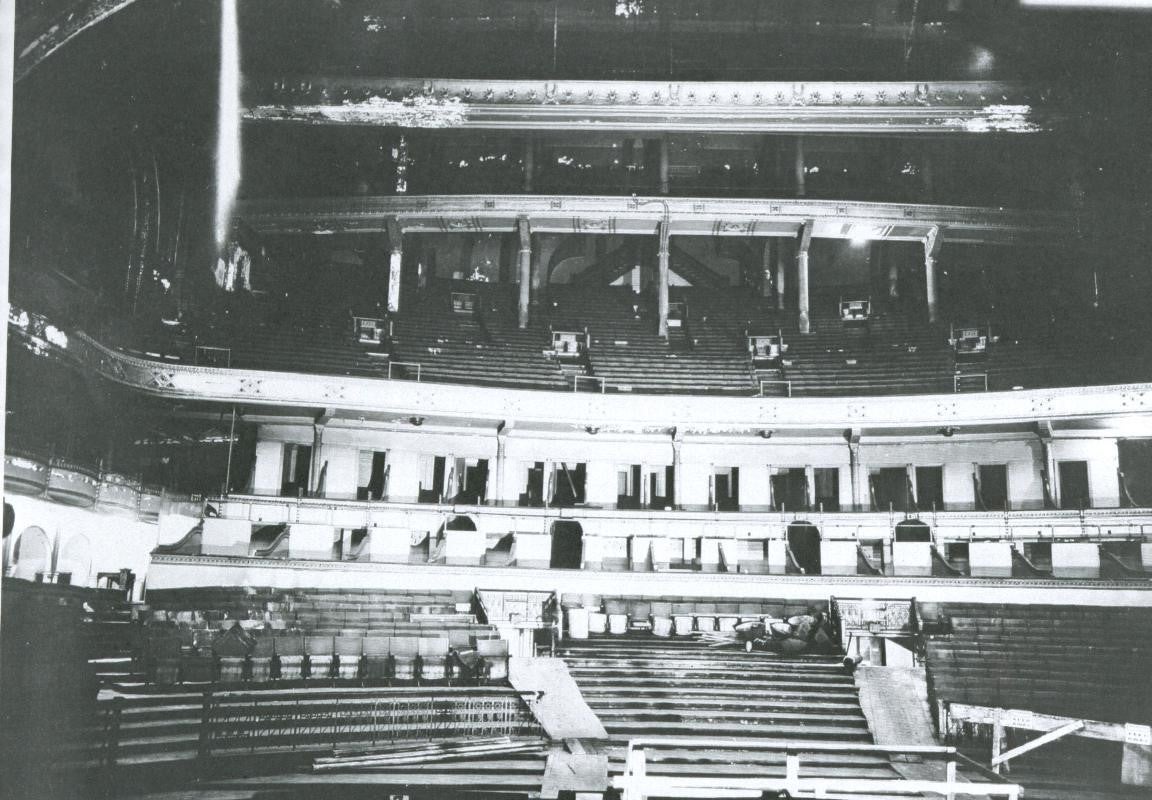
1940-1950
World War II
The Great Depression and World War II were challenging times for The Auditorium and the rest of the world. During the 1930s, The Auditorium’s stakeholders looked to a variety of alternative business opportunities to generate income for the theatre. However, many of them were short lived or never made it out of the planning stages. In addition to new business ventures, The Auditorium was also at risk of being demolished. What saved the theatre from being torn down was its mammoth size because the cost for the building to be demolished was greater than the land was worth. In 1941, The Auditorium declared bankruptcy and by the following year, 1942, the building was taken over by the city of Chicago. During this time, the theatre was used as the fourth Chicago Service Men’s Center.
As a USO Service Men’s Center, The Auditorium Building’s previously used hotel rooms and offices were repurposed to accommodate the needs of the military men that were coming in and out. A few months into this transition, the stage of the theatre and a few front row seats were converted into a 12-lane bowling alley.
The Auditorium remained as a USO center until the end of World War II in 1945. By the of the war, The Auditorium housed, fed, and entertained more than 2.2 million servicemen.[1, 2]



Roosevelt University
In 1946, Roosevelt University purchased the Auditorium Building and used its old hotel rooms and offices as classrooms. At the time, the university was only about two years old and did not have the funds or resources to restore The Auditorium back to its glory days. As a result, the theatre remained vacant for two decades.
“After that came silence. The lights didn’t work, and cobwebs covered everything. The roof began to leak, and as the water dripped through the ceiling and down the walls, it saturated the plaster, and it began to fall. Now if you stood in the dark theatre, you heard it constantly, the chunks of plaster thudding intermittently and a steadier sound which was the plaster dust sifting down.” [3]

Al Capone’s Lawyer
The purchase of The Auditorium Building was not an easy transaction for Roosevelt University’s President, Edward J. Sparling. The building was divided into segments owned by different people, and one of those owners was Al Capone’s attorney, Abraham Teitelbaum. Teitelbaum owned the part of The Auditorium that contained the heating plant, all fire escapes, freight elevators, some stairways, part of the hotel lobby, many bedrooms and part of the theatre pit, stage, orchestra, and boxes.4 Teitelbaum valued his holdings at $800,000 (nearly $18M today!) and offered to sell his portions of the building for that price. The attorney was protective of his assets of the building and even had chicken wire put up to divide his part of the building from the rest of Roosevelt’s. By February 1947, Teitelbaum agreed to sell his share of The Auditorium for half of the amount he originally demanded.
Fun Facts
The Auditorium was one of the first theatres to be both heated and air conditioned, allowing it to function year-round. The air intake was located south of the stage. The air was then heated or cooled in the basement before it was pumped into the theatre through ornamental plaster domes located throughout the theatre. The presence of domed vents in the upper galleries, as well as on the main floor, supported Ferdinand Peck’s ideal of democracy – everyone got a heated or air-conditioned theatre experience.
In Chicago’s colder months, the air was drawn into the theatre and washed with sprays of water, humidified and forced over hot radiators before being circulated into all areas of the theatre.
In summer, 15 tons of ice were delivered daily to the theatre through huge doors in the sidewalk. The ice was crushed, salted, and placed in large holding vats. Air drawn in from the theatre’s south side intake was sprayed clean and cooled by forcing the air across the vats of crushed ice. The modern air-cooling system allowed audiences of The Auditorium to enter the theatre and cool off.
Citations
- Chicago Service Men’s center – fragment. Chicago Film Archives. (n.d.). https://collections.chicagofilmarchives.org/Detail/objects/24490
- USA History @ the aud: WWII service men’s center. Auditorium Theatre. (2020, July 1). https://auditoriumtheatre.org/uncategorized/usa-history-the-aud-wwii-service-mens-center/
- Hunt, R. (n.d.). Resurrection of a masterpiece. Chicago Tribune, 39.
- Lawyer Will wall off half chicago theatre unless roosevelt college buys up his part. (1946, September 8). The New York Times.
